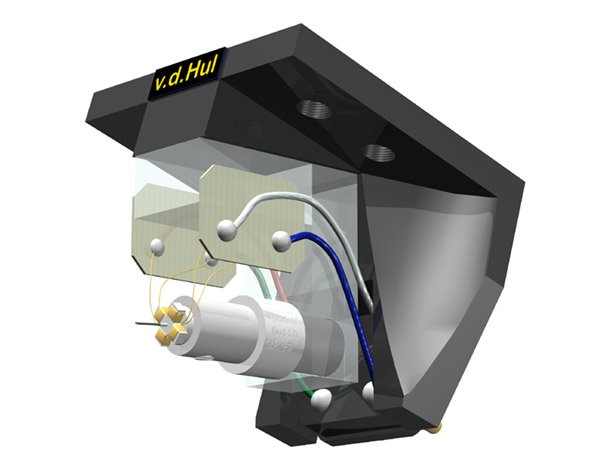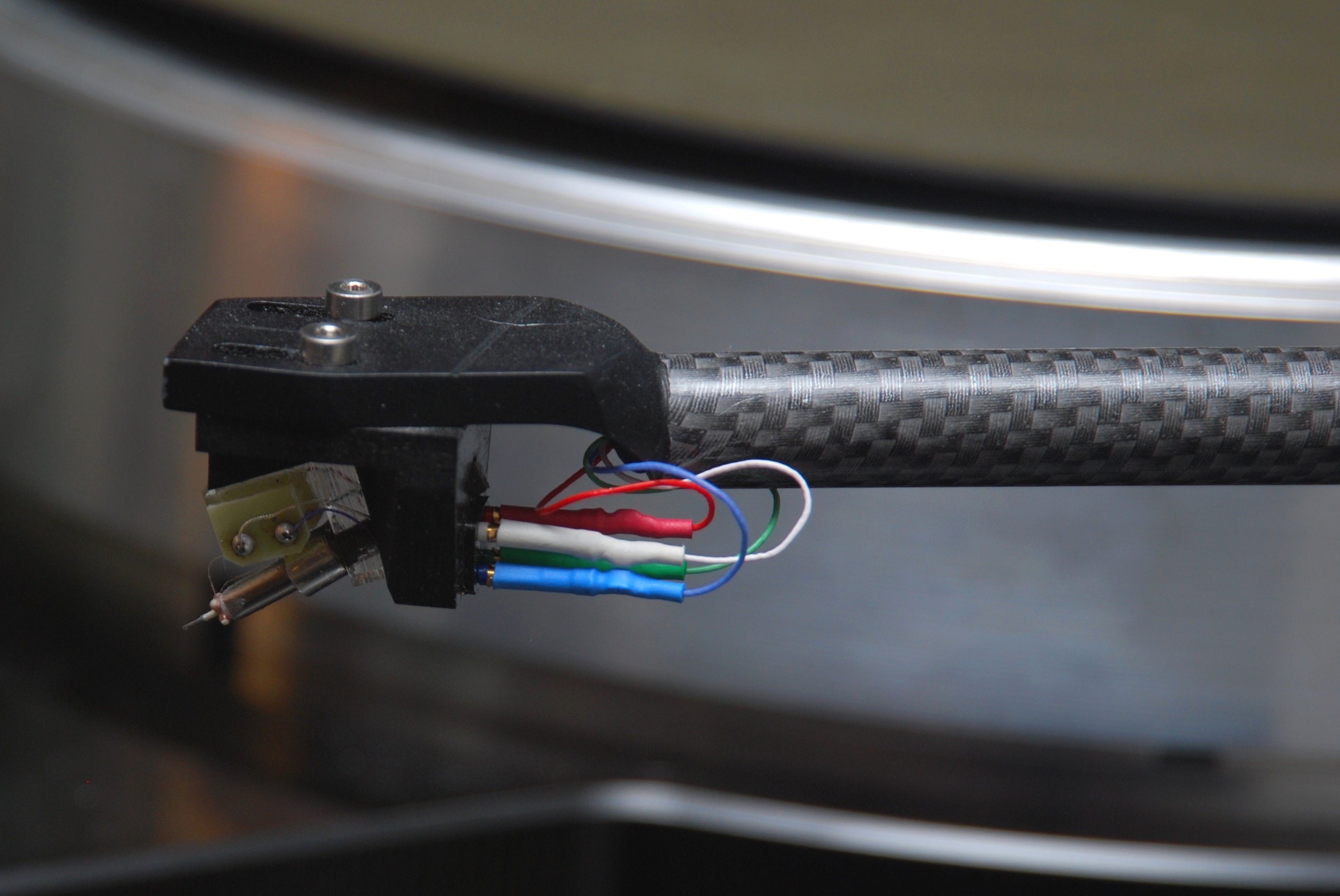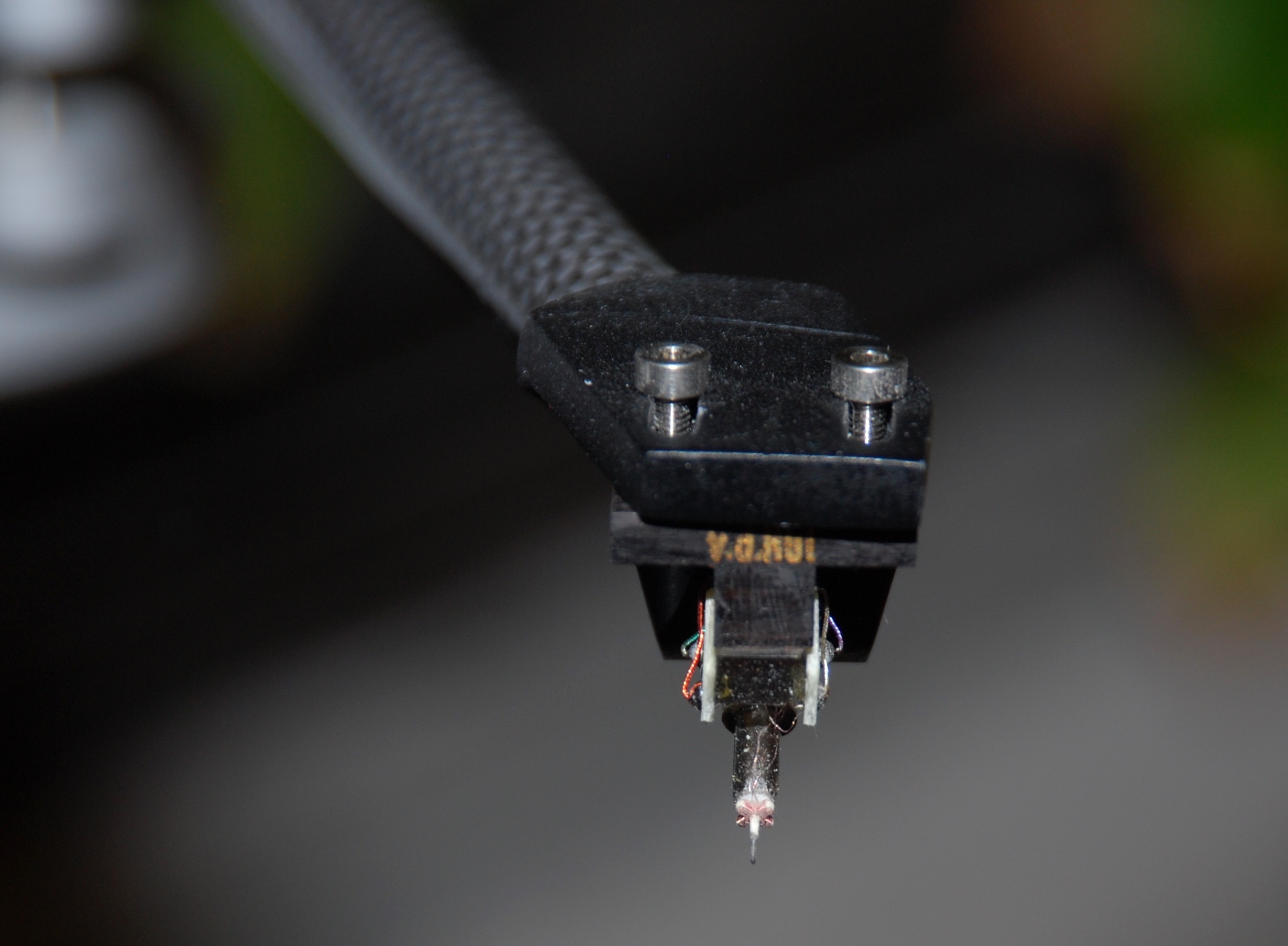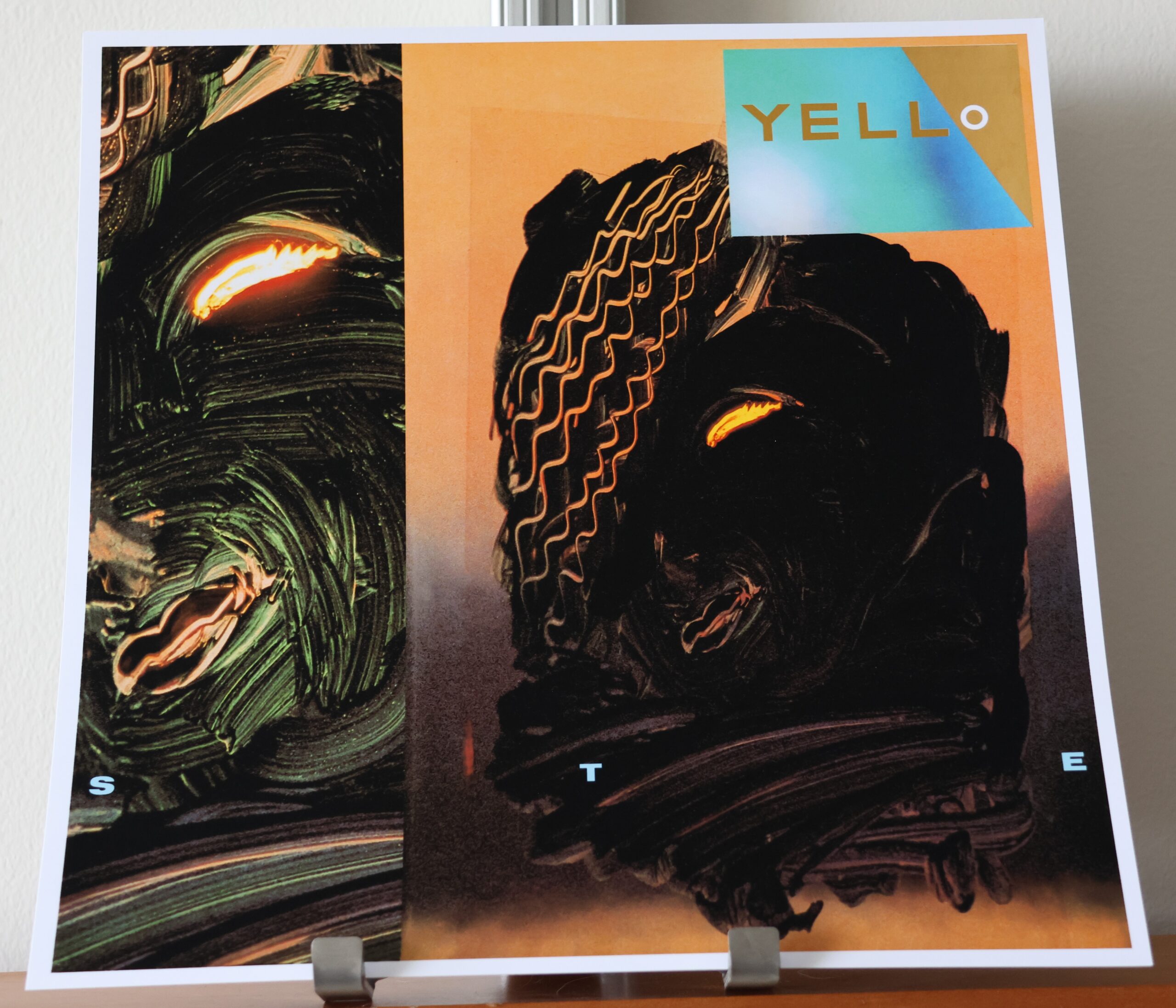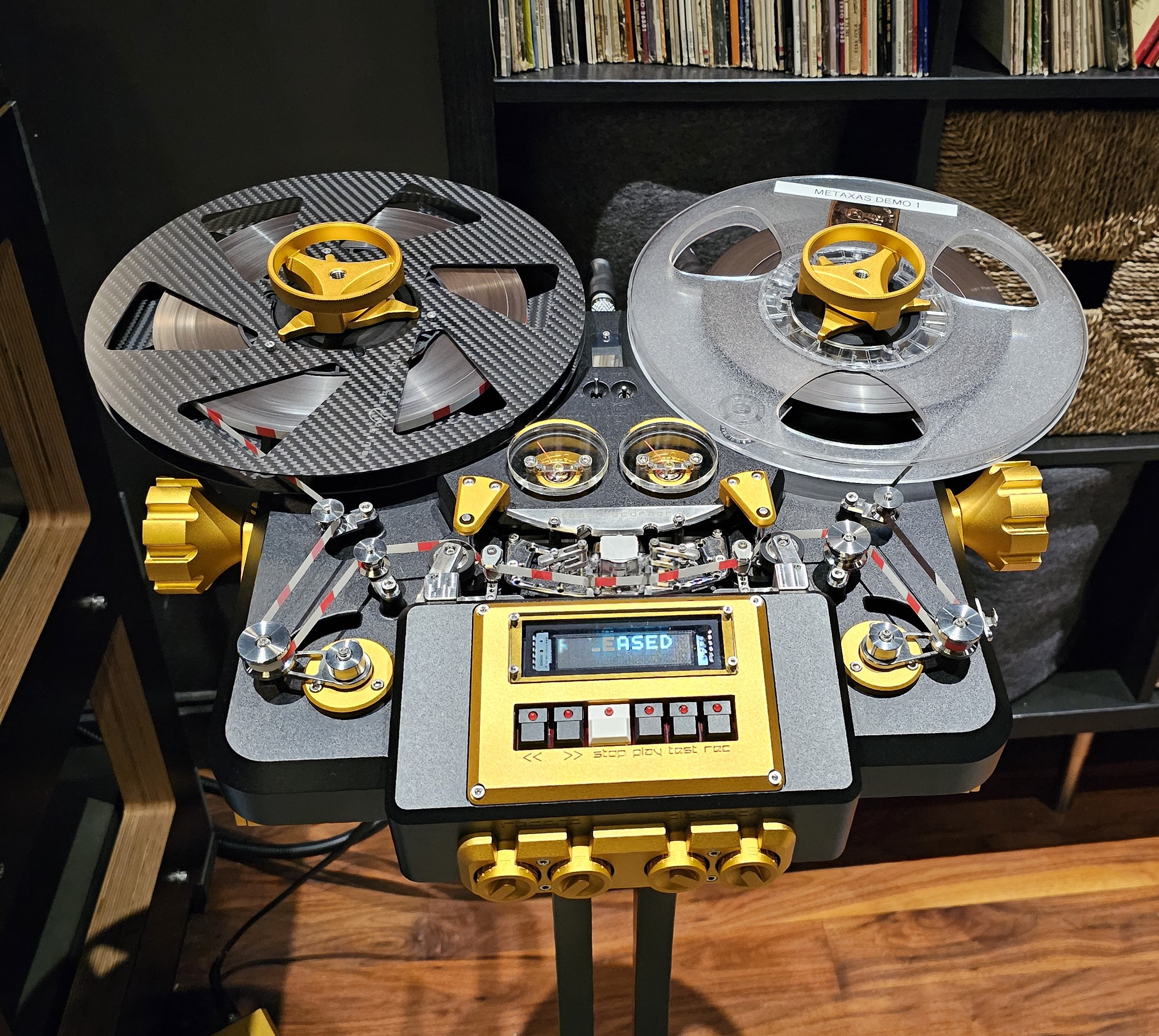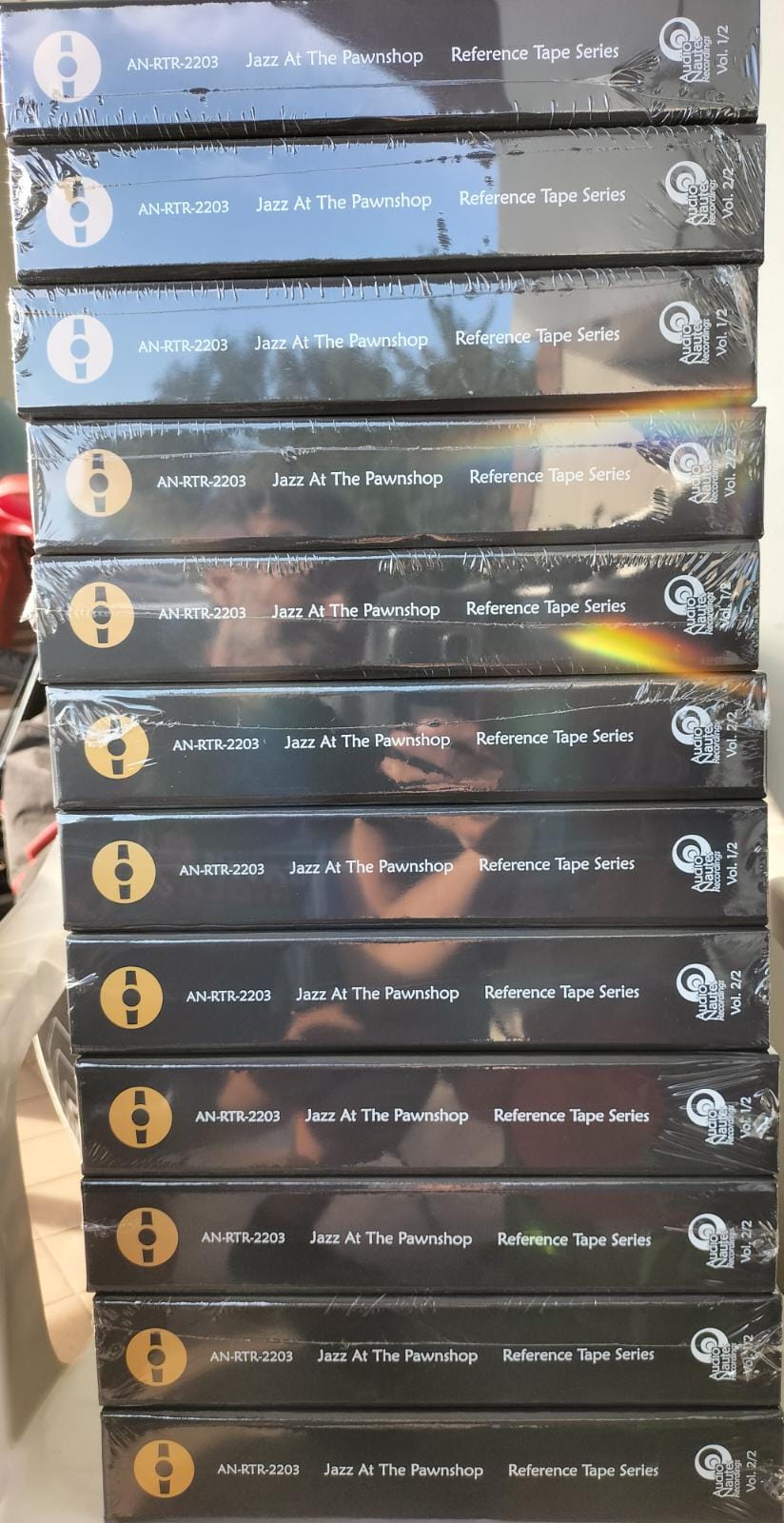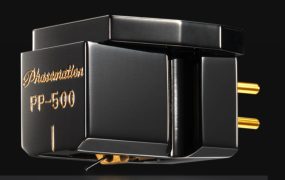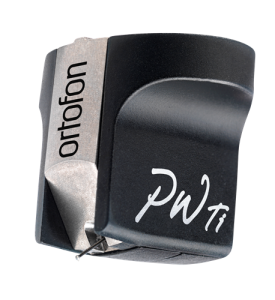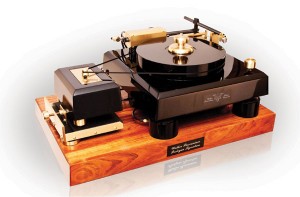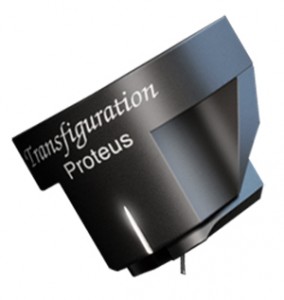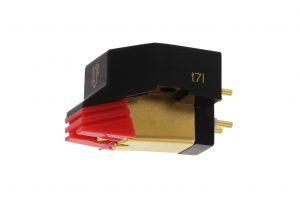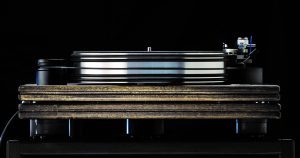I'll save you the trouble and time of skipping the discussion and jumping directly to the conclusions for the low down on the van den Hul Colibri Stradivarius XGW Stradivarius cartridge. For the record, A.J. (short for Aalt Jouk) van den Hul's latest creation is hands down one of the finest transducers to pass through my system in the last couple of years. Mind you the only cartridge that betters the Colibri Stradivarius here costs almost $5500 more.
More importantly, the Colibri Stradivarius doesn't -- as often occurs in this era of ever increasing obsession with neutrality, resolution and transparency -- throw the midrange out with the bath water. Absolutely not. Midrange beauty and instrumental harmonics aren't sacrificed for detail and clarity; yet this moving coil cartridge is more than capable of holding its own against all comers when it comes to resolution. More importantly, the Colibri Stradivarius's relaxed quality allows listeners to become one with the music. Musical events simply unfold as intended.
Nor should this come as a surprise to anyone who's been involved in high-end audio over the years. A.J. van den Hul is one of the most pre-eminent and prolific cartridge designers in the world over the last 40+ years. A.J.'s VDH Type 1 stylus was released back in 1973 and that profile was quickly "adopted"–though not necessarily by legal means—by many Japanese cartridge manufacturers. An even more staggering statistic? A.J. has sold more than 1.4 million of his styli over the years.
After developing his for that time revolutionary stylus profile shape—and remember many argued that this stylus would damage records—A.J. moved onto the business of repairing, retipping and modifying cartridges. I remember [as a then young audio neophyte] many audiophiles and audiobuddies having van den Hul retip and/or modify their cartridge in the '80s. Soon after A.J. decided to because of "short supply" to develop and manufacture his very own first cartridge named the DDT (detail, depth and timbre). A.J's cartridge design philosophy then—and now—is perfectly summed up in this excerpt from John Atkinson's 1986 Stereophile interview: "…three essential aspects of a cartridge: mechanical, magnetic, and electrical. If the magnetic design is wrong, then you never get the good electrical signal; it's also wrong. So you need to pay a lot of attention to the magnetic circuit before you can achieve a good electrical signal." Read more HERE.
Demand for a "real" high-end audio cartridge pushed A.J. to design the Grasshopper moving coil cartridge series (I to IV). The Grasshopper—and direct predecessor of the Colibri Stradivarius cartridge —graced many audiophile's and reviewer's tonearms in the '90s. Versa Dynamics. Forsell. VPI. And many more turntables and arms. The Grasshopper was renowned in its day especially for its speed, preciseness and resolution. As one of my former distinguished reviewing colleagues Dr. Michael Gindi recently recalled (he reviewed version III for TAS Issue 78 back in 1992, you can read that HERE), "the Grasshopper was very refined and detailed with great extension. But it was also musical without being mushy."
In 1995 the ever popular Grasshopper cartridge was superseded by A.J.'s latest creation the Colibri cartridge line. Named after the Caribbean hummingbird, early Colibri's (with Dynavector parts) used copper coils and their 0.22 mV output placed them firmly in the low output cartridge camp. By contrast, the generator mechanism of the current Colibri Stradivarius XGW Stradivarius cartridge is wound with gold wire and produce a much more robust 0.38 mV output.
Drinking the Nectar
Permit me to first indulge in some guilty pleasures before addressing the cartridge's midrange qualities. I am to a large degree a product of living in a big city like New York, and having so much opportunity to listen to live music an unabashed and unashamed soundstaging freak. There's no difficulty in locating each and every instrument in small jazz venues such as Smoke. Each and every instrument is precisely located at Carnegie Hall. Nor does the Colibri Stradivarius disappoint, whether it's a Blue Note jazz ensemble, a RCA, a large scale Mercury or Decca orchestral recording, or even something more ethereal such as Andreas Vollenweider's Caverna Magica (CBS FM 37827) or White Winds (FM 39963). Throw in a side order of VPI's new dual pivot modification for their 12-inch 3D tonearm and the Colibri Stradivarius's soundstage is simply spectacular, and at times, breathtaking. Wide, very deep and precisely defined down to the millimeter. Instruments on the best recordings can seem outside the room boundaries. The same holds true for instrumental palpability and the feeling of depth to individual instruments when the cartridge is correctly set-up and aligned. Take the final two tracks "River Paradise" or "End Titles-Eagle's Break" track from that long-time reference Emerald Forest (Varese Sarabande STV 81244). Instruments literally pop in and out from nowhere like rabbits drawn out of a hat and are precisely nailed down within the vast and spacious soundstage.
Then there's the Colibri Stradivarius's midrange. Many times the term "relaxed" comes with a negative connotation. Not in this instance. In the case of the Colibri Stradivarius "relaxed" means non-mechanical. No edginess. No coldness. No artificiality. It seems as mentioned earlier that some designers have in their quest to design speakers, electronics, cartridges, etc. without yesteryear's technicolorations threw the baby out with the bathwater. The midrange presence region in many cases has been somewhat sacrificed in that quest to extend the frequency extremes, lower noise floor, increase speed, etc. While that midrange may be wonderfully detailed, it lacks a little bit of body, warmth and viscerality. In other cases, the midrange appears a little recessed relative to the rest of the musical spectrum. Not with the Colibri Stradivarius. No particular part of the frequency spectrum stands out in contrast to another. The Colibri Stradivarius is very reminiscent of tape in this regard, where the music comes out almost perfectly balanced and the listener never consciously thinks about listen to those dynamics; or harmonics; or resolution. No. The music envelops you and you just react to the sound instead of reaching out for the sound. Just sit there and take each song in and appreciate each bar, the rhythm, the underlying structure of say a blues piece and most of all the emotional impact.
That brings us to a bit of a midrange paradox. The Colibri Stradivarius isn't quite say up to the Lyra Atlas SL's transparency or midrange resolution. Nevertheless, the Colibri Stradivarius sounds in some ways a little more like reel-to-reel tape than the Atlas SL in this ever so critical region. Take for instance the "Round About Midnight" cut from the superlative—and arguably best direct-to-disc ever recorded—Moonlight Serenade (Jeton 100 3315). Here the Atlas SL gives you every pluck of the guitar's string with amazing precision and clarity. Or a bit more texture to Dean Martin's voice on "Blue Moon" or "Everybody Loves Somebody" from Dream with Dean (Analogue Productions APP 076-45) with the Atlas SL. Yet the Colibri Stradivarius with its slightly more relaxed quality might sound ever so slightly here tonally more like Almeida's guitar and Martin's voice.
No less impressive is the Colibri Stradivarius's ability to render the upper octaves and recreate the recording's spaciousness. Up to now the Atlas SL and the Koetsu Azule Platinum cartridges have reigned king of spatial retrieval. The Colibri Stradivarius has now supplanted the Koetsu in this regard. Take one of my favorite and all-time great Mercury recordings, Hovhaness Symphony #4 (Mercury 90366-original red label promo pressing). In this case, it was Robert Eberenz and not Robert Fine who did an amazing job of capturing the cornucopia of percussion instruments—whether it be on the "Andante," "Allegro" or "Andante Expessivo" movements from this symphony—as well as the sense of space of Eastman Theater. The Colibri Stradivarius does nothing to spoil the experience and captures the airy essence of Eastman Theater, the crash and decay of the tam-tams etc.
The "Alter" cut from the 180 gram Three Blind Mice reissue of Imada's Now! (Three Blind Mice TBM-2) is another great demonstration of the Colibri Stradivarius's upper octave performance The Colibri Stradivarius's ability to recreate the sense of spaciousness goes beyond just the sound enveloping the orchestra but extends to the softest reverb tail of an instrument. On "Alter," the Colibri Stradivarius digs in and retrieves the subtlest and softest piano reverb seemingly decaying into the sunset from the groove. Moreso, this track really illustrates the difference in upper octave performance between digital and analog. With the Colibri Stradivarius the cymbals shimmer and decay naturally as opposed to digital's congested, ill defined, crunchy sound. Cymbals are feathery soft and delicate with Colibri Stradivarius and metallic as ought be with the instrument's decay trailing off forever.
Where does the Colibri Stradivarius fall slightly short of ultimate? One area is low end impact, sheer authority, and tightness. For instance, take Ray Brown's bowing on the "Round About Midnight" from Moonlight Serenade album. Here Colibri Stradivarius just doesn't quite equal the gut wrenching, shudder, and unrestrained dynamics of the Atlas SL. But then again no other cartridges equal the Atlas SL here either. Nevertheless, the Colibri Stradivarius does an incredible job distinguishing between and reproducing the tone of the bass clarinet (phrase 2) vs. contrabassoon (phrase 4) of the opening movement of Hovhaness Symphony #4.
Nor does it quite have the racing car-like cornering ability of the Ikeda 9TT or Transfiguration Proteus. On the other hand, the Colibri Stradivarius is plenty fast enough and doesn't ever call attention to itself by shouting out "listen to how fast I am." There's simply no noticeable lack of speed when that 1962 recording Flatt and Scruggs Live at Carnegie Hall (Columbia CS 8845) is spinning on VPI's direct drive Vanquish turntable. This 1962 recording—and I'll never be known as a bluegrass fan—will melt the heart of anyone who listens to these two masters of banjo going to town in New York that year. Every pick of the banjo along with its distinctive twang is cleanly rendered. Flatt and Scruggs is one of the few live Carnegie hall recordings that hasn't been reissued and it just cries out for a 45 rpm treatment.
Lastly, the Colibri Stradivarius may just lose a smidgen in midrange resolution and ultimate transparency using the direct-to-disc of Laurindo Almeida and Ray Brown doing "Round About Midnight." Remember though. We are comparing the Colibri Stradivarius to cartridges double or more the price. But none of these minor imperfections ever detract from the beauty and the connection to the music.
Combining Elegance and Speed
It's an absolute no brainer recommending the Colibri Stradivarius to anyone looking for a cartridge in this price range or for that matter even their dream groove tracer. Certainly all facets of a component's performance add to its realism but for me, it's the Colibri Stradivarius's sense of space and soundstaging coupled with tonality that really set this cartridge apart from the competition. Most all, I never cease to be moved by whatever is on the table, classical, rock or jazz, when the needle comes to the end of the record!
Stay tuned for my upcoming interview conducted with A.J. van den Hul at this years' 2017 Axpona Show!
Technical Highlights
The Colibri Stradivarius XGW Stradivarius is designed to work in tonearms with an effective mass of 10 to 16 grams; thus the VPI 3D tonearm's 10 gram effective mass proved a perfect match. Furthermore, the van den Hul Colibri Stradivarius can also upon request be specially tuned to the owner's tonearm. The "XGW" designation stands for:
- X=crosscoil
- G=gold wire
- W=wood body
Make no bones about it. The Colibri Stradivarius is a bare naked, Grey's Anatomy of cartridge design. Everything including the coils, cantilever and wires hang out. So take care not to disturb nor mistake the extremely thin wires coming out of the coils for cat hair or dust attached to the cartridge's body!
According Randy Forman, owner of Finest Fidelity and the US van den Hul distributor, "the single biggest area of improvement in the new Colibri Stradivarius is a lowering of the cartridge's noise floor." A.J. further elaborated, "the noise is reduced by more than 2.6 times in the higher output version." The Colibri Stradivarius is a single-pole engine (by contrast, the Crimson is a more traditional two-pole design) that allows for a cantilever that is half the normal length (3 vs 6 mm). According to A.J., this unique short cantilever design allows for "better tracing of groove modulations, transduction, directness and accuracy and a very fast pulse response."
Each Colibri Stradivarius takes -- not including the four weeks to fashion the Koa body from a solid block of wood -- around five hours to build. First, the cartridge's body is carved from a block of Koa wood. Next, the wood is treated with three coats of a special, 400 year old Stradivarius based lacquer formula. Finally, the lacquer is left to cure for four weeks. The lacquer treated Koa wood body serves two functions. First is the absorption of vibrations produced during the playing of the record, and second, the lacquer adds a hard shell and improves the impact of the cartridge.
Interestingly A.J. sets aside around 1800 to 2000 weekend hours a year for building, modifying and repairing cartridges. In total, A.J. builds about 300 new and repairs 700 cartridges per year. A.J's turnaround on cartridge repairs averages around 3-5 days.
A.J. designed the elastomer used in the Colibri Stradivarius's suspension over 40 years ago. At that time, he made a lifetime supply of elastomer and then cryogenically froze what he didn't use at the time. Nowadays A.J periodically removes only as needed amounts of this frozen elastomer when building new cartridges. The improved generator mechanism circuit in the Colibri Stradivarius consists of Samarium-Cobalt magnets and the cross-coil design is wound with 24 K gold wire. (The Grasshopper III circa 2000 was the first van den Hul cartridge to use gold wire coils.) Each channel is as with all van den Hul cartridges balanced to the max; in this case the Colibri Stradivarius arrives balanced to within 0.1B. Interestingly, the Colibri Stradivarius is the second cartridge—the first being the ZYX Omega Au—that I've reviewed with gold wire coils. And the Colibri Stradivarius rapidly dispels the notion that gold wire coils have a particular sound. There is none of that "traditional" gold wire associated softening of the upper octaves. In fact, the Colibri Stradivarius has wonderfully extended and delicate upper octaves.
The business end of Colibri Stradivarius cartridge uses a boron cantilever and a van den Hul Type 1.5 stylus. Boron cantilevers are rapidly becoming an endangered species and many cartridge manufacturers have been left scrambling to find alternative metals or alloys. Luckily A.J. amassed a large inventory of boron cantilevers that should last for the foreseeable future! What makes boron cantilevers so desirable? Top among the reasons A.J. shared, "are the materials hardness and rigidity combined with low mass. The vdh Type 1.5 styli are hand polished, five at a time in a machine and then checked.
Colibri owners can also after 200 hours of playing return their cartridge (and rubber elastomer break-in) for a "tuneup" that consists of rechecking cartridge channel balance and alignment. The only charge for this service? A $40 shipping fee. All US customers need do is return their cartridge to Finest Fidelity and Randy then ships the cartridge back to Holland. In roughly two or three weeks, the cartridge is back in the owner's hands.
The Colibri Stradivarius was run in balanced mode using Transparent Audio's newest XL Gen. 5 differentially balanced phono cables along with the Doshi V3.0 phono stage. One exceptionally nice feature of the Doshi V3.0 phono stage—and a no brainer for reviewers—is the unit's remote control loading. This feature allows for setting two different loading values and switching between them while sitting and listening. When all was said and done the Colibri Stradivarius sounded best loaded at about 150-160 ohms into the Doshi phono stage.
Finally, a few words on setting up the cartridge. Because of its naked (and no stylus guard) nature, the Colibri Stradivarius isn't necessarily a cartridge for the faint of heart. But no issues were encountered while installing the Colibri Stradivarius and the naked body—and a little care—proved advantageous. The Colibri Stradivarius's naked body (just as with the Lyras) allows for easy visualization and alignment of the cantilever as well as overhang (VPI owners may want to use a lighter counterweight with this light cartridge!). In addition, the small, very light, bubble level included with the cartridge that sits on top of the headshell allowed for easy levelling.
Randy suggested the cartridge be slightly up in the back and the VTA was easily checked with either the Millenium Audio Vision or Acoustical Systems Smart Stylus alignment blocks. The Jeton Moonlight Serenade direct-to-disc album also proved indispensable in setting VTA. One thing that I focused on when setting VTA with this album was the balance between the guitar's detail relative the instruments harmonics. Too low and the guitar lost its bloom. Just right and the guitar had a wonderful balance between the fundamentals and the harmonic envelope surrounding the instrument.
The Colibri Stradivarius tracked like a champ at 1.5 grams and in general had no issues. The only problem encountered was a slight tracking problem on rare LPs with a severe edge pinch warp that for some reason was exacerbated by the VPI ring clamp. In this case, removing the rim clamp, however, seemed to resolve most of this tracking issue.
Lastly, the Stradivarius was mounted in both the normal VPI 3D arm—and at the end of the review—the modified dual pivot 3D arm. The new dual pivot mod kit is a winner and it only brought out and accentuated the cartridge's low end acumen as well as soundstaging capabilities.
van den Hul Colibri XGW Stradivarius Moving Coil Cartridge
Retail: $7995
Specifications
- Frequency response: 5-65,000 Hz
- Output voltage: 0.38 mv
- Tracking force: 1.35-1.5 grams
- Compliance: 35
- Body: Koa wood
- Stylus shape: VDH-1S
- Stylus radii: 2 x 85 microns
- Vertical Tracking angle: 22 degrees
- Recommended loading: 40-47,000 ohms; optimal loading: 40-400 ohms
- Recommended tonearm effective mass: 10-16 grams
- Weight: 6 gms
- Internal impedance: 23 ohms
Distributor
Finest Fidelity




